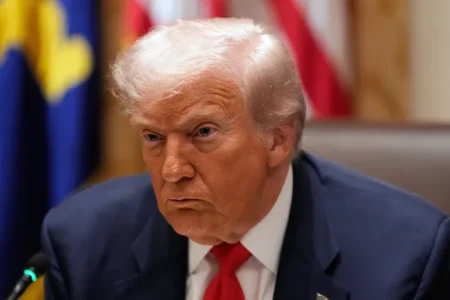Russia has sharply reduced support for small and medium-sized businesses (SMEs) as budget pressures mount and the economy slows. Economists and business leaders warn that the cuts could hurt the sector’s long-term health.
Government subsidies for SMEs fell 43% in the first quarter of 2025 compared with the same period last year, according to a report from the Higher School of Economics Development Center. Total aid dropped from 127.8 billion rubles ($1.6 billion) to 72.3 billion rubles ($918 million). This is also below the support level in early 2022, shortly after Russia launched its full-scale invasion of Ukraine, when aid reached 75.8 billion rubles ($962 million). The number of SMEs and self-employed individuals receiving government assistance fell 17%, to 99,200 recipients.
The reduction reflects a broader shift in the Kremlin’s approach to business support. The planned allocation for SMEs from 2025 to 2030 totals 330 billion rubles ($4.2 billion), a 20% drop from the previous six-year plan. Lending initiatives, including the popular 1764 program that offered subsidized interest rates through commercial banks, have been affected the most. New eligibility rules mean only one in ten businesses qualifies, limited to five sectors: manufacturing, logistics, tourism, science, and IT.
Russia’s Economic Development Ministry defended the move, saying the SME sector has matured enough to operate with less state help. Officials highlighted that over 6.5 million companies and more than 29 million individuals are active in SMEs, accounting for 21.7% of GDP. Entrepreneurs have raised over 263 billion rubles ($3.34 billion) through government-backed loans as of early 2025.
Despite official statements, experts warn that the cuts may strain small firms, which often work on thin margins and face high borrowing costs. “Access to financing remains a key factor for enterprise competitiveness,” said Yegor Diashov, chairman of the financial markets commission at Moscow’s Opora Rossii. “Without funding, companies cannot grow, modernize, or stay competitive in domestic and global markets.” The Central Bank has kept interest rates high to control inflation, making borrowing costly for small businesses. Lending to SMEs has fallen, and many companies struggle to manage existing debt. Nearly 70,000 small businesses — about one in ten with loans — sought debt restructuring in the first quarter of 2025.
Stepan Zemtsov, director of the Center for Economic Geography and Regional Studies at the Presidential Academy, said reduced support could slow growth and limit SMEs’ ability to fill gaps left by large corporations affected by Western sanctions. Small businesses often maintain consumer demand when larger firms face difficulties. Tatiana Ushkats, an economist at RUDN University, warned that ongoing cuts may trigger broader economic weakness, including higher unemployment and reduced competitiveness.
Business confidence is already under pressure. In May, 10% of SMEs reported plans to lay off staff, double the rate in April. The RSBI index, which tracks SME activity, fell to 50.9 in May from 52.4 in April, signaling stagnation for the first time in over two years. “The overall trend shows SMEs entering a period of stagnation,” said Kirill Tikhonov, senior vice president of Promsvyazbank. The reduction in state support for SMEs raises critical questions about Russia’s economic strategy as small businesses face higher financing costs, stricter loan eligibility, and growing uncertainty in the wider economy.







